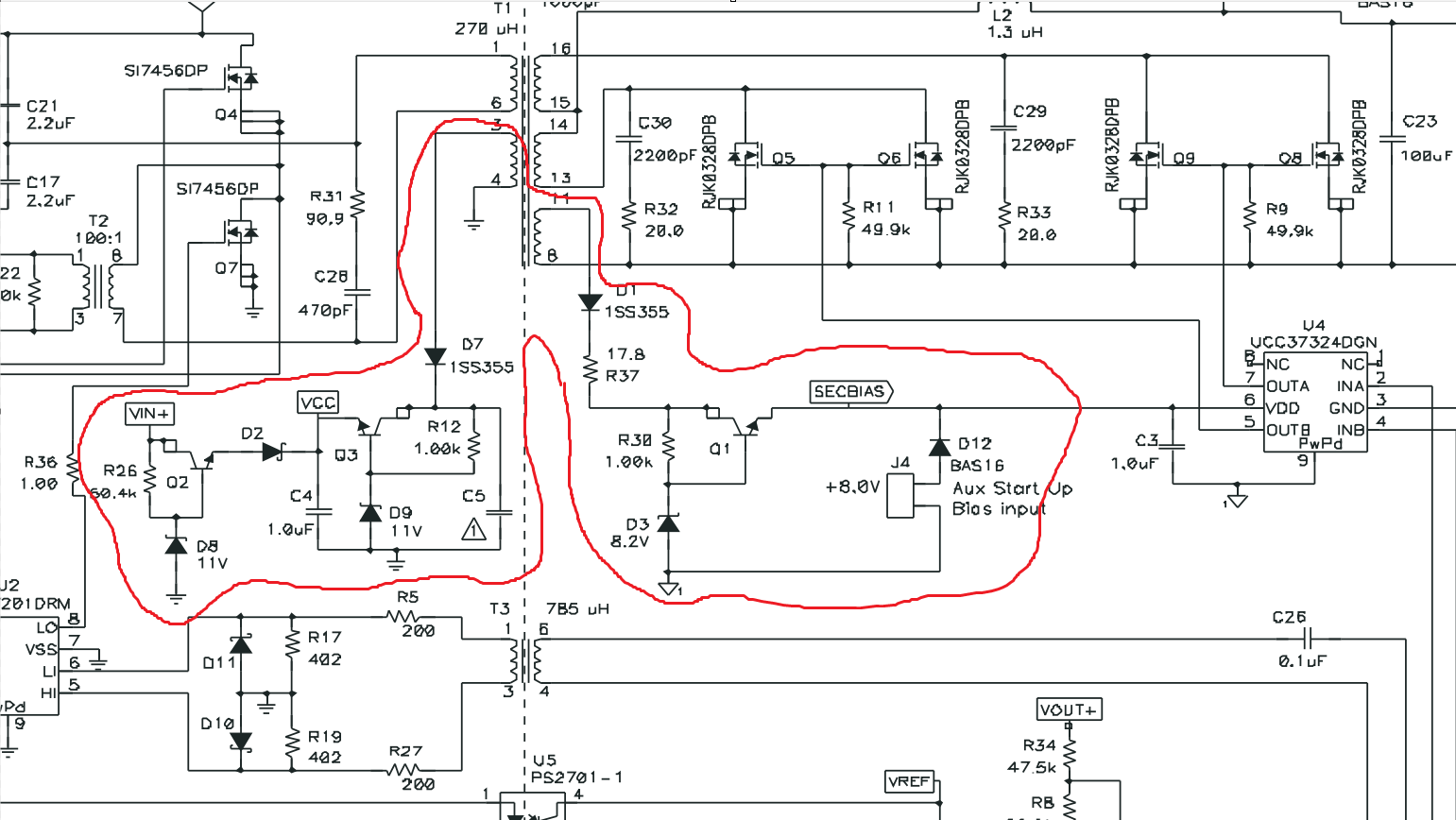In this schematic (below) from the Texas Instruments UCC28250EVM-564 User's Guide (Controller for Half-Bridge DC-to-DC Converter With Secondary-Side Control), they use a bias winding. I understand that VCC is generated form Vin and it's 11V. This will power the drivers of the MOSFETs on the primary side. SecBias is generated on the secondary side, it is 8V, and it will power the controller.
What I don't understand is:
- How is the winding 3-4 connected to the secondary? Is it through the winding 11-8? Are they connected in any way?
- What is the role of Q3 and D7?
- Why is there that connector for "Aux Start-up Bias input"? Is it just in case I want to connect an external power supply and skip the other circuitry when turning on the converter?

